A woman who called 911 to report a nearby crime was killed by a US police officer last weekend. The circumstances surrounding her death are still unclear.
The fatal shooting of Justine Ruszczyk, a dual Australian-US national who had settled in Minnesota in 2014, has made headlines in both her native Australia and her adopted home in Minneapolis -- once again reigniting the all too familiar debate surrounding the role that firearms play in both law enforcement and in the civilian population throughout the country.
The United States arms some 900,000 law enforcement officers, according to 2014 FBI figures -- in concert with the majority of the world's police forces who are also armed.
However, a small club of 19 nations do not routinely arm their police forces, including most of the UK, Ireland, Iceland and Norway. Three-fourths of the southern Pacific islands do not give guns to their officers either. Countries without armed police officers on average exhibit gun-homicide rates markedly lower than countries with armed police forces.
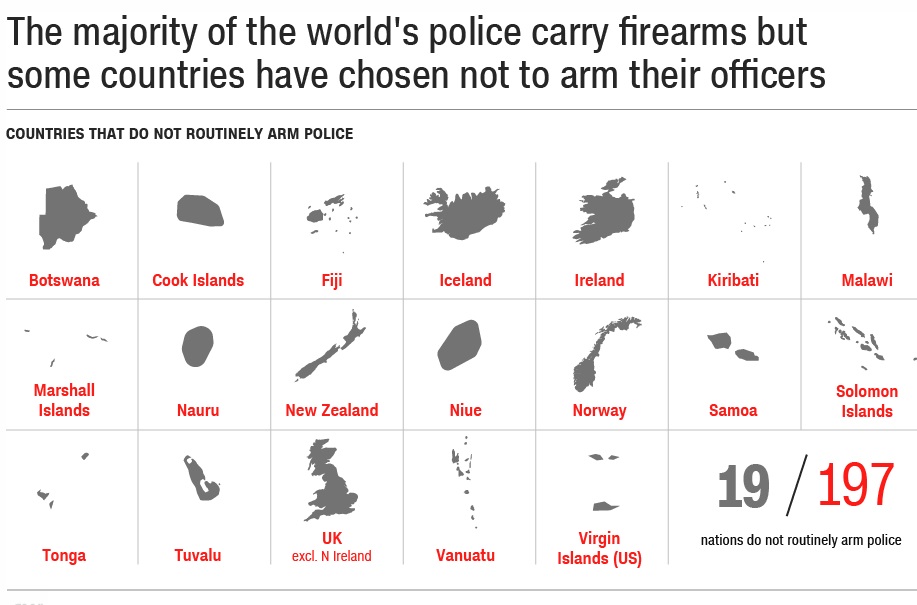
In the US, 41 police officers were killed in the line of duty in 2015, according to FBI data. Civilians killed by police, classified as "justifiable homicide," by the FBI's Uniform Crime Reporting (UCR) Program, are also reported each year.
According to the UCR, between 2008-2012, an average of 400 people were killed by police annually in the United States. But many human rights organizations place this number far higher, citing lack of transparency in how the shootings are reported to the public. The Washington Post has reported 547 fatal police shootings so far this year alone.
Although America's unique relationship to guns sits at the forefront of the national psyche, gun culture in the US is often seen as an outlier globally.
Here's a comparative look at how individual gun ownership -- and gun violence -- in the US compares to the rest of the world.
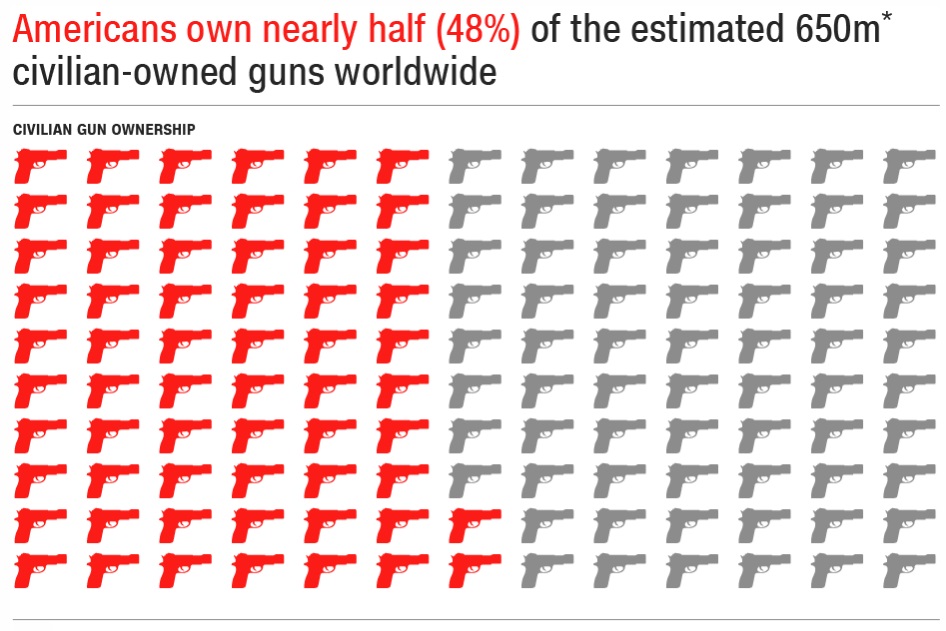
The number of firearms available to American civilians is estimated at around 310 million, according to a 2009 National Institute of Justice (NIJ) report.
India is home to the second largest civilian firearm stockpile, estimated at 46 million.
The most updated estimates -- now nearly a decade old -- place the worldwide civilian gun cache at around 650 million. According to Switzerland-based Small Arms Survey, the number of civilian guns has most likely risen since 2007. Firearm production continues to proliferate worldwide, outweighing the effects that gun destruction might have.
According to the Small Arms Survey, the exact number of civilian-owned firearms is impossible to pinpoint because of a variety of factors including arms that go unregistered, the illegal trade and global conflict.
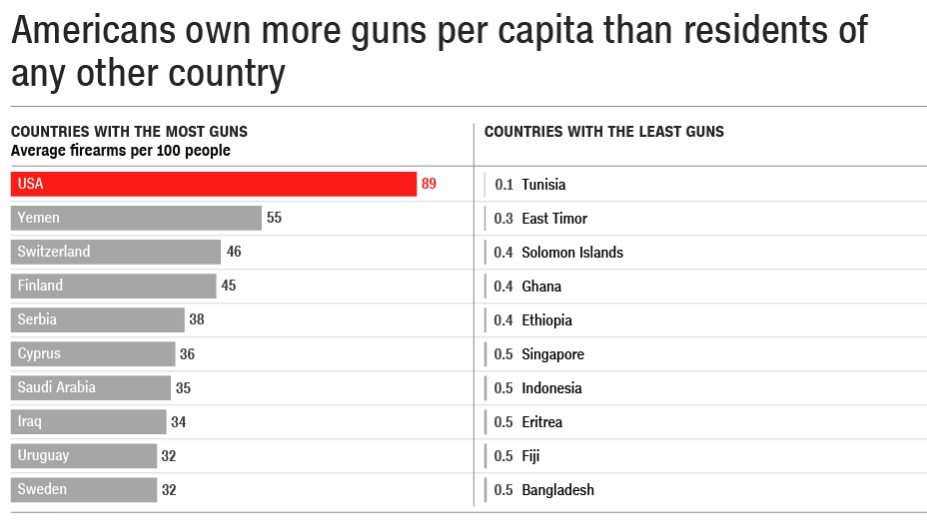
Americans own the most guns per person in the world, about four in 10 saying they either own a gun or live in a home with guns, according to a recent Pew Center study. Forty-eight percent of Americans said they grew up in a house with guns.
According to the survey, a majority (66%) of US gun owners own multiple firearms, with nearly three-quarters of gun owners saying they couldn't imagine not owning one.
Yemen, home to the world's second-largest gun-owning population per capita (and a country in the throes of a two-and-a-half-year civil conflict) trails significantly behind the US in terms of ownership.
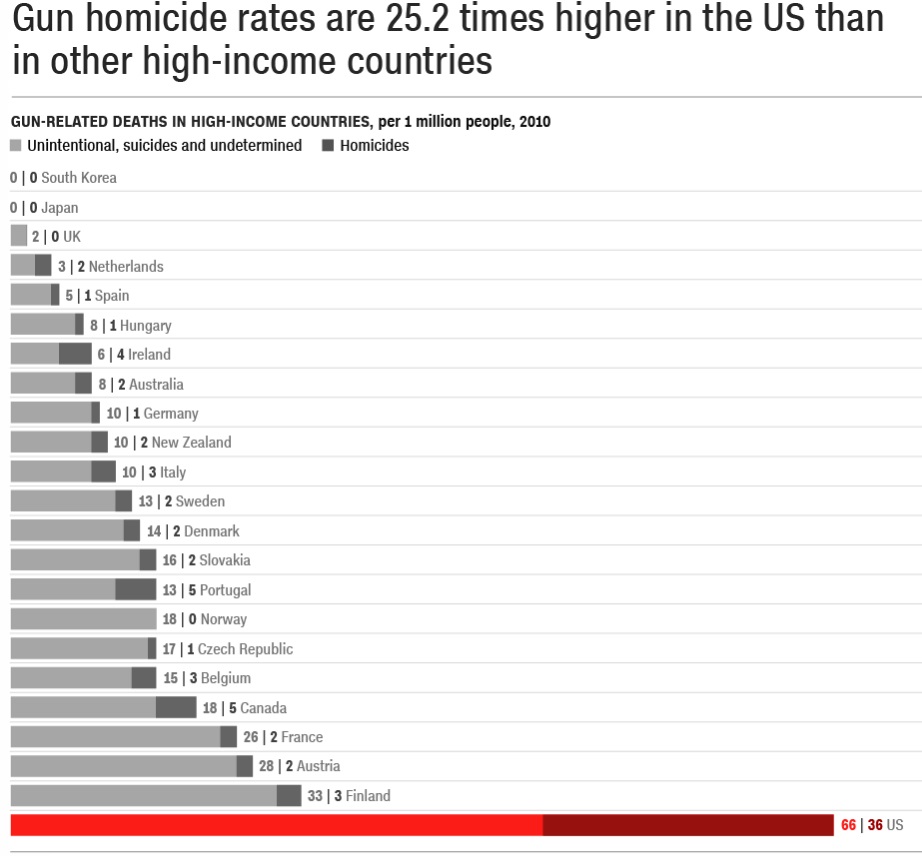
The US has one of the highest rates of death by firearm in the developed world, according to World Health Organization data.
Our calculations based on OECD data from 2010 show that Americans are 51 times more likely to be killed by gunfire than people in the United Kingdom.
Most American gun owners (two-thirds) say a major reason they own a gun is for their personal protection, according to the Pew study. However, the majority of America's firearm-related deaths are attributed to self-harm.
Gun-related suicides are eight times higher in the US than in other high-income nations.
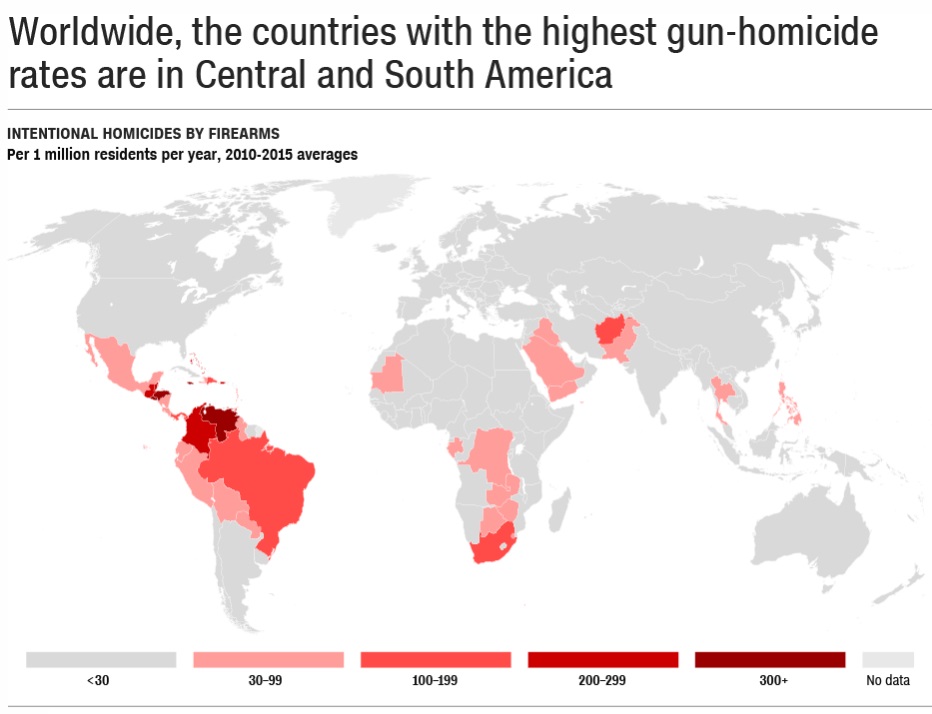
Globally, the US sees fewer gun-related murders than many of its southern neighbors.
According to the Small Arms Survey, El Salvador is currently home to the most gun-related murders in the world (excluding active war-zones) with guns killing more than 90 people for every 100,000 of population.
From 2010-2015, Honduras saw the highest averages of gun-related homicides, with guns killing 67 out of every 100,000 people there.
Venezuela and El Salvador also top the charts over the same five-year period, with 52 and 49 gun-related deaths, respectively, for every 100,000 of population.
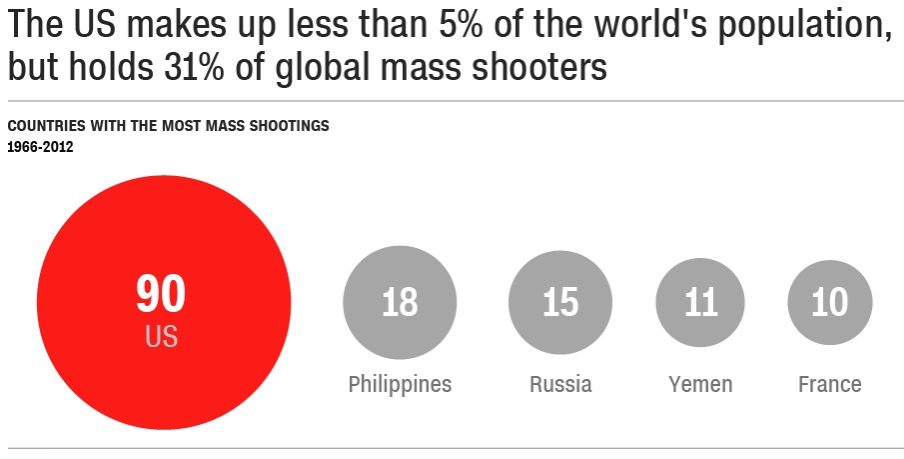
But when it comes to gun massacres, the US is an anomaly.
There are more public mass shootings in America than in any other country in the world.
The 2016 Orlando attack was the deadliest shooting in US history, with 49 people killed. In 2012, Adam Lanza went on a shooting spree in Newtown, Connecticut, killing his mother before murdering 26 students and staff at Sandy Hook Elementary School; in 2007, 32 people were killed in the Virginia Tech massacre.
Such massacres can spur debates about gun control, but they also increase demand for guns. And regulations covering the sale of firearms are looser now that they were just a few months ago.
In February, US President Donald Trump signed a measure that scrapped a Obama-era regulation aimed at keeping guns out of the hands of some severely mentally ill people.
The original rule was part of a series of moves taken by the Obama administration to try and curb gun violence after other efforts failed to advance in Congress.
Globally, restrictive gun laws have proven to make a difference in curbing massacres.
In Australia, for example, four mass shootings occurred between 1987 and 1996. After those incidents, public opinion turned against gun ownership and Parliament passed stricter gun laws. Australia hasn't had a mass shooting since.

